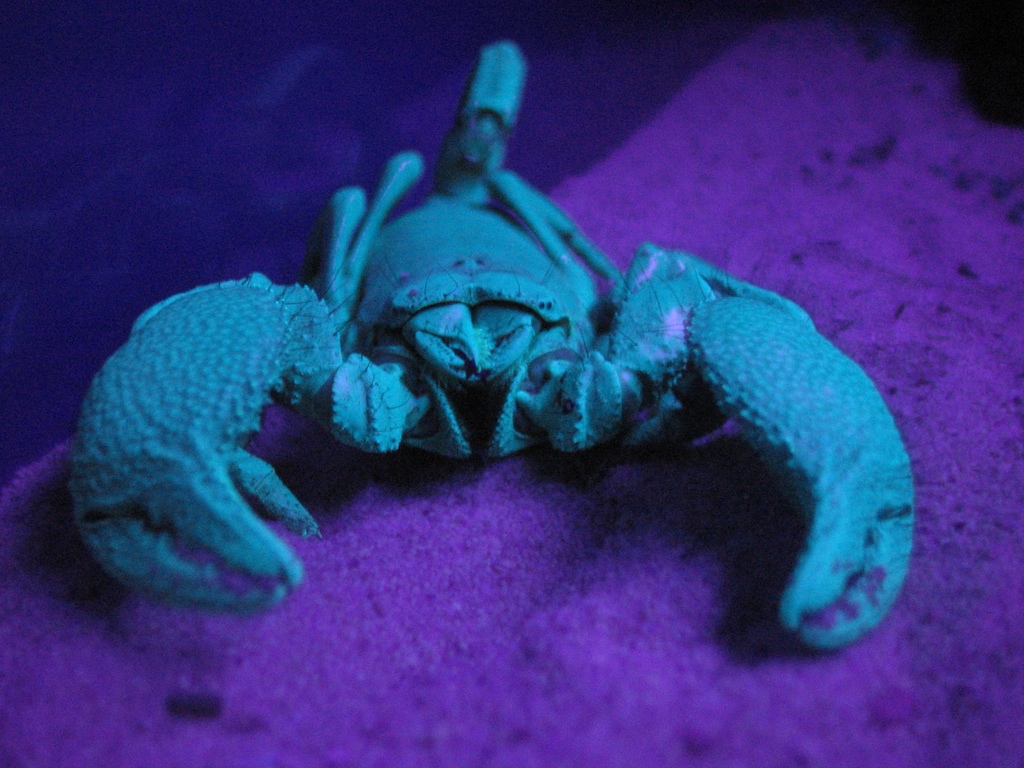Coronene
(a
polycyclic
aromatic
hydrocarbon) occurs naturally as yellow crystals in a
mineral called
carpathite. It
appears yellow under white light. However when illuminated with
254 nm ultraviolet light (shortwave ultraviolet), it glows bright
white-blue as it radiates visible light
photons
(~ 400 to ~ 700 nm).

A scorpion fluorescing under a blacklight (longwave ultraviolet
light; ~ 350-370 nm).


